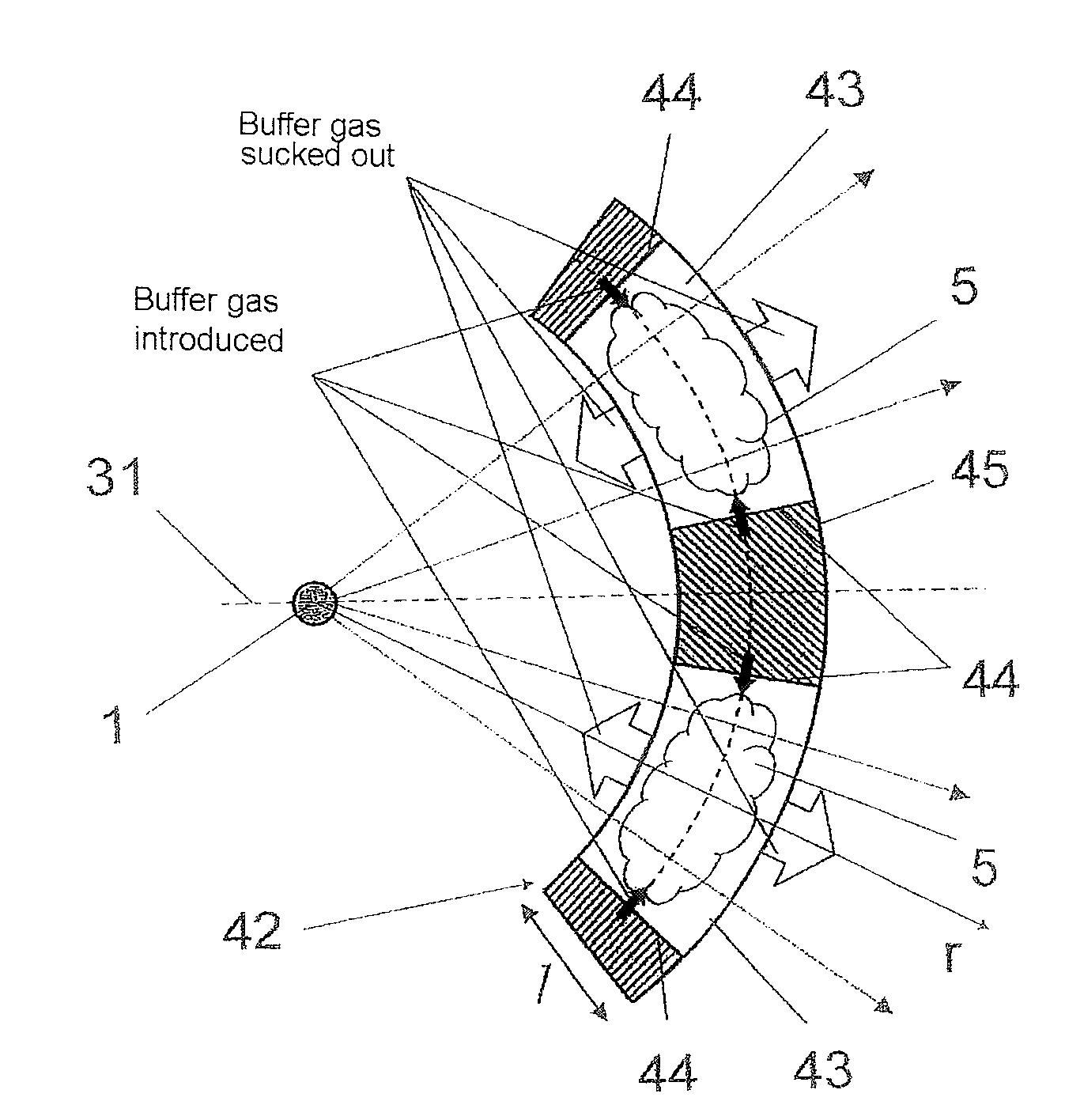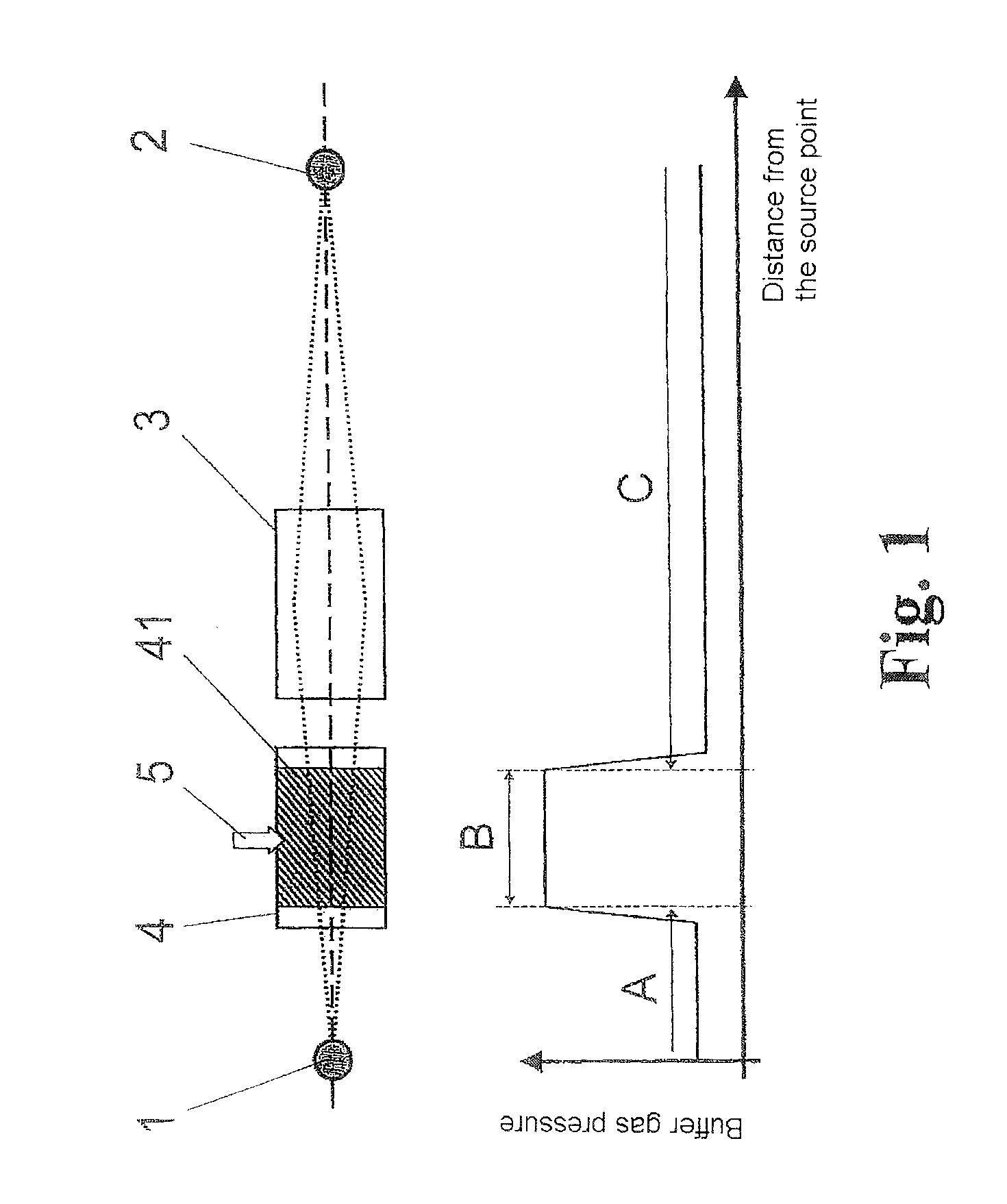Method and arrangement for the suppression of debris in the generation of short-wavelength radiation based on a plasma
a short-wavelength radiation and plasma technology, applied in the field of plasma plasma-based plasma-based debris suppression, can solve the problems of parasitic gas discharge, rotating blade filter, and ineffectiveness of all types of particles, and achieve the effect of suppressing particle flow (debris)
- Summary
- Abstract
- Description
- Claims
- Application Information
AI Technical Summary
Benefits of technology
Problems solved by technology
Method used
Image
Examples
Embodiment Construction
[0064]The basic principle of the invention—as is shown in FIG. 1—consists in that a debris filter 4 is arranged between the radiation-emitting plasma 1 and an intermediate focus 2 that is generated by collector optics 3 as a conjugate imaging of the source location (plasma 1). An increased gas pressure of a suitable buffer gas 5 is generated within the volume of the debris filter 4. The flow resistance of a (mechanical) filter structure 41 of the debris filter 4 is used for limiting the gas load for the surrounding vacuum chamber 6 (shown only in FIG. 4). Inside the filter structure 41, the buffer gas 5 is injected lateral to the direction of the passage of radiation. Any noble gas, but preferably one with a heavy atomic weight (such as argon or krypton) because of their better braking effect on high-energy debris particles, can be used as buffer gas 5. Other inert gases or mixtures of inert gases and / or noble gases can also be used, particularly to increase thermal conductivity.
[00...
PUM
 Login to View More
Login to View More Abstract
Description
Claims
Application Information
 Login to View More
Login to View More - R&D
- Intellectual Property
- Life Sciences
- Materials
- Tech Scout
- Unparalleled Data Quality
- Higher Quality Content
- 60% Fewer Hallucinations
Browse by: Latest US Patents, China's latest patents, Technical Efficacy Thesaurus, Application Domain, Technology Topic, Popular Technical Reports.
© 2025 PatSnap. All rights reserved.Legal|Privacy policy|Modern Slavery Act Transparency Statement|Sitemap|About US| Contact US: help@patsnap.com



